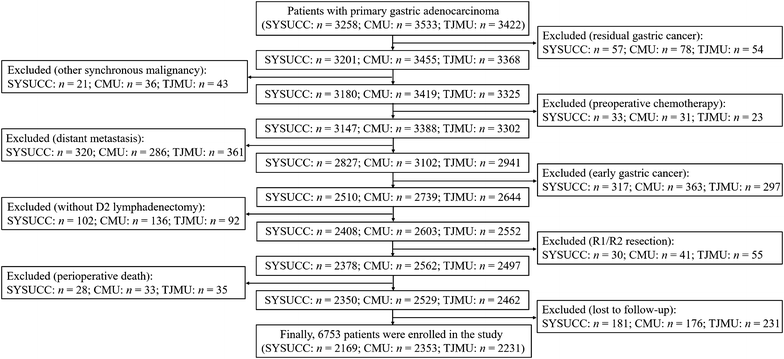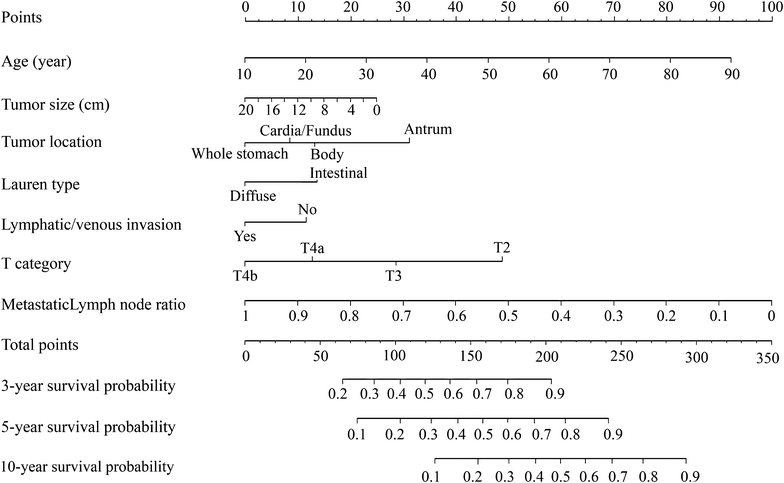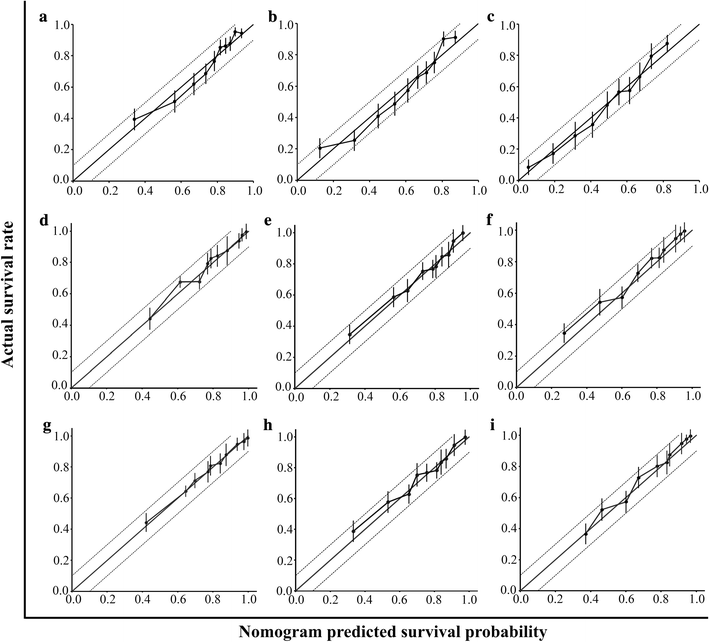A novel nomogram individually predicting disease-specific survival after D2 gastrectomy for advanced gastric cancer
- PMID: 29764518
- PMCID: PMC5993138
- DOI: 10.1186/s40880-018-0293-0
A novel nomogram individually predicting disease-specific survival after D2 gastrectomy for advanced gastric cancer
Abstract
Background: Few studies have shown nomograms that may predict disease-specific survival (DSS) probability after curative D2 gastrectomy for advanced gastric cancer (AGC), particularly among Chinese patients. This study sought to develop an elaborative nomogram that predicts long-term DSS for AGC in Chinese patients.
Methods: A retrospective study was conducted on 6753 AGC patients undergoing D2 gastrectomy between January 1, 2000 and December 31, 2012 from three large medical hospitals in China. We assigned patients from Sun Yat-sen University Cancer Center to the training set, and patients from the First Affiliated Hospital of China Medical University and Tianjin Medical University Cancer Hospital to two separate external validation sets. A multivariate survival analysis was performed using Cox proportional hazards regression model in a training set, and a nomogram was constructed. Harrell's C-index was used to evaluate discrimination and calibration plots were used to validate similarities between survival probabilities predicted by the nomogram model and actual survival rates in two validation sets.
Results: The multivariate Cox regression model identified age, tumor size, location, Lauren classification, lymphatic/venous invasion, depth of invasion, and metastatic lymph node ratio as covariates associated with survival. In the training set, the nomogram exhibited superior discrimination power compared with the 8th American Joint Committee on Cancer TNM classification (Harrell's C-index, 0.82 vs. 0.74; P < 0.001). In two validation sets, the nomogram's discrimination power was also excellent relative to TNM classification (C-index, 0.83 vs. 0.75 and 0.81 vs. 0.74, respectively; P < 0.001 for both). After calibration, the nomogram produced survival predictions that corresponded closely with actual survival rate.
Conclusions: The established nomogram was able to predict 3-, 5-, and 10-year DSS probabilities for AGC patients. Validation revealed that this nomogram exhibited excellent discrimination and calibration capacity, suggesting its clinical utility.
Keywords: Advanced gastric cancer; Disease-specific survival; Prognostic nomogram.
Figures




References
Publication types
MeSH terms
Grants and funding
LinkOut - more resources
Full Text Sources
Other Literature Sources
Medical

